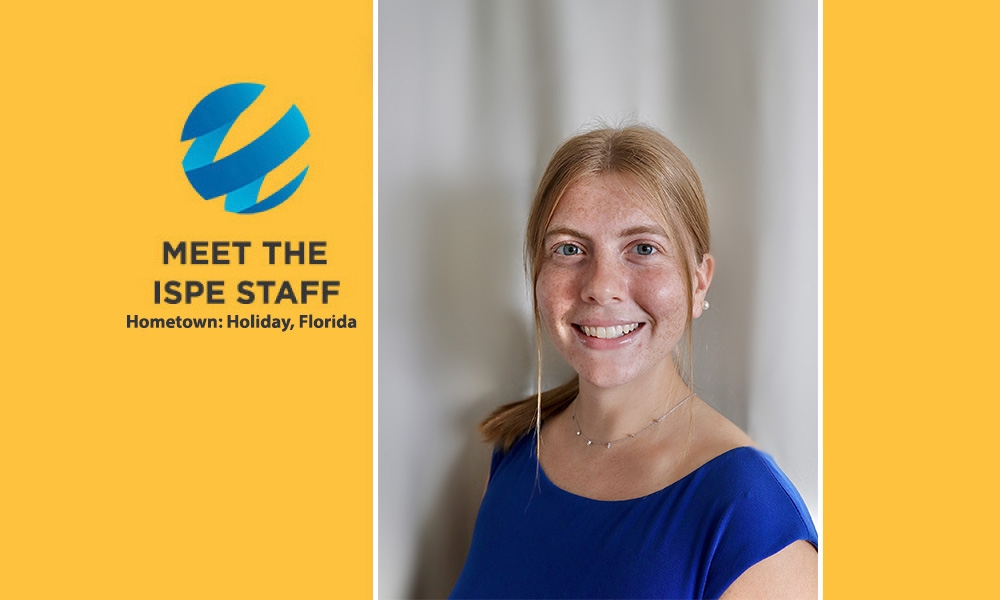2023 ISPE Aseptic Conference Regulatory Panel

On 7 March 2023, ISPE concluded the 2023 ISPE Aseptic Conference with a regulatory panel question and answer session. Attendees were invited to submit questions to the FDA representatives. This article offers highlights from the discussion.
At this year’s session, most questions focused on technical pharmaceutical queries related to sterile products, whereas last year’s panel had a lot of questions around audit practices during the pandemic and learnings from virtual and hybrid inspections. The insightful questions and open discussion made for a very successful session, and participants went home with information that will help them in their jobs.
A highlight of the session was the mutual praise from industry and regulators on how well the two parties worked together during the pandemic to bring vaccines and drugs to the patients in record time. Please note that views expressed by the panelists are not necessarily representative of the position of the FDA, and that questions and responses are lightly edited for clarity. A more comprehensive write-up can be found at ispe.org.
The FDA representatives in this panel were:
- Laura Fontan, Consumer Safety Officer, Center for Biologics Evaluation and Research (CBER)
- Sandra Boyd, Drug National Expert, Office of Regulatory Affairs (ORA)
- Brooke Higgins, Senior Policy Advisor for the Global Compliance Branch, Center for Drug Evaluation and Research (CDER)
- Rick Friedman, Deputy Director, Office of Manufacturing Quality, CDER
First air refers to the filtered air that has not been interrupted prior to contacting exposed product and product contact surfaces with the potential to add contamination to the air prior to reaching the critical zone. We hear people discuss the concept of second air. Do you align the phrase with the potential to add contamination?
I don’t think many of us would want to subscribe to the concept of second air as appropriate. The standard is first air, and that means that there is no major blockage of air that would cause a perturbance, or disruption of air, and special attention should be afforded to the area of exposed sterile vials, syringe barrels, or bags. This needs to be demonstrated in the smoke study qualifications. The bottom line is that aseptic production equipment should be designed well, and other than machine components that are absolutely necessary, such as filling nozzles and stopper placement equipment, there shouldn’t be any things that are directly above the product.
How will the FDA use Annex 1 in its final version?
Annex 1 is aligned and in harmony with the FDA’s guidance for aseptic processing from 2004. The FDA has been involved in the development of the final version of Annex 1 via PIC/S (Pharmaceutical Inspection Convention/Pharmaceutical Inspection Co-Operation Scheme). The FDA’s guidance has different topics and details in it that are additive to Annex 1, but they are compatible. The FDA’s guidance was written to last for a long time without being overly prescriptive. We describe the principles that facilitate voluntary compliance by the industry. Although local policies are in general alignment with PIC/S guidelines, there are some aspects that are additive in the EU, Australian, and other PIC/S member local guidelines on various topics.
With the mutual recognition agreement between the EMA [European Medicines Agency] and the FDA, do you think the FDA will also expect PUPSIT [pre-use post-sterilization integrity testing] for products released to the US?
Our guidance does say that integrity testing can be performed prior to processing and that it should be routinely performed post use. It is similar to the language in Annex 1, which indicates that pre- and post-use testing should be done and then you can eliminate the pre-use test with risk assessment. Our guidance might not be identically worded to Annex 1, but it is equivalent and aligned.
If a fully automated process with a gloveless isolator does not require operator intervention in the critical zones, could that filling machine potentially be placed in a grade D or even less stringent room?
You must consider your sterile core where your filling is happening. Even though it’s operating closed, you’re going to need to open it for any maintenance procedures, for any preparation procedures, for any cleaning procedures, and every time you’re setting it up for another filling process. So, you want that sterile core protected. You want it in a higher grade than a D because you don’t want to impact the cleanliness of that sterile core in any operations that you need to do when it’s open. You want the surroundings as clean as possible. We would not recommend a D or less stringent room for this kind of operation.
What are the most common observations in the past year, and how should a company respond to them?
For me, the two most common observations are not having the data to support your room classifications. During inspections, I find beautifully written reports that are delightful to read. However, I’m always going to look at the data to support the classifications justified by those reports and that’s where I’ll find problems. There is no raw data to support the claims made in those reports. The second most common observation I find is media fills are not representative of routine manufacturing. Whether it’s not documenting all the interventions during routine production so it is unknown how many should actually be done during a media fill or not trending interventions, the interventions performed during a media fill are not representative of the production process.
First, I’ve seen a lot of procedures that are either inaccurate or they’re lacking the detail for production to perform their tasks correctly and consistently. Another one is that qualifications and validation reports and the data from the qualification don’t get transferred into the process parameters or into the procedures to represent the way that the system was validated. Whether it’s cleaning validation, autoclave validation, or disinfectant efficacy qualifications, they don’t get transferred over into the procedures to get executed the way that they were validated.
We are seeing a lot of issues with smoke studies. There are deficient air flow patterns that are obvious to us when we’re watching the videos that are not being caught by the firms. Another area is the design of filling lines, especially older lines, and they are so difficult to work with. When you respond to our observations, we want to see a robust, comprehensive, systemic response—not a narrow response that focuses only on the specific examples cited on the FDA 483.
For example, there is an issue with one investigation. The company opened up that one investigation again, but they may need to expand their review to their full investigation system and consider all of the equipment that might be similar to the one piece that we had an issue with or all media fills—not just the one that we found an issue with—and then provide supporting evidence for commitments. Finally, there is the topic of time frames: When are you going to implement some of the corrective actions, and what are you going to do in the meantime?
A highlight of the session was the mutual praise from industry and regulators on how well the two parties worked together during the pandemic to bring vaccines and drugs to the patients in record time.
How often should gloves for RABS [restricted-access barrier systems] be autoclaved?
You should look at the frequency based on your processing durations and how you are using the gloves. Check what the manufacturer recommends, because some gloves have a certain number of qualified autoclave cycles. What I would typically do is look at the firm’s program of how they are autoclaving or treating their gloves and see what their use is, how their campaign manufacturing is, and see what their rationale is behind supporting their program for autoclaving their gloves.
With the US being a member of PIC/S, are products manufactured and marketed in the US required to meet Annex 1?
PIC/S membership is extremely valuable, as it actively supports convergence on inspector training. Besides convergence on inspection practices through shared training, there are additional benefits from policy engagement that lead to aligned thinking. The regulators weren’t talking to each other en masse through any formal mechanism before we started working with PIC/S. I mentioned already that there is the question of sovereign policies and local things. But PIC/S provides policies that are authoritative, and they do generally provide strong baseline standards that we refer to in our regulatory work.
The Emergency Use Authorization approval for the COVID-19 vaccines was a major success. Can the FDA adopt principles of how the EUA was implemented to expedite approval of drugs?
The agency was working on all parts of the approval process in parallel, the same as industry. And so instead of all the different steps being branched out and one after another, they were stacked and in parallel, which helped industry accelerate the development of the COVID-19 vaccines. We also stacked our review, looking at the use authorization for the vaccines, and we stacked it with multiple resources we borrowed from other parts of the agency.
This meant that there were other drugs and other applications that we put on the back burner because we put all our resources into the COVID-19 vaccine approval or authorization and then approval. This was a process that was justified for this health emergency, and we would not be able to do it on all drug applications. It was quite an experience and an amazing effort at the agency on all levels of management. But no, not doable under normal circumstances.
For indirect contact parts, is it necessary to employ sterilization? There are lines with no autoclave. Is there a way to accept decontamination with bioburden assessment and robust pre-cleaning? That is, if you can remove the parts.
You should autoclave the contact parts like guard rails. If they’re removable, we would want to see them autoclaved. I am curious as to why there are sites with no autoclave. I would expect if you can take format parts apart, you will autoclave it.
For gloveless Isolators, is it okay to omit contact plate monitoring?
No, we would recommend that end-of-campaign monitoring should be incorporated.
How often should a disinfectant efficacy program be reevaluated and what principles are most commonly missed when creating a program?
You would want to reevaluate your disinfectant efficacy program if your facility isolates have changed. You also would want to reevaluate your program if you are adding or changing any cleaning agents. The part that is most commonly missed when we are looking at a disinfectant efficacy program and when we’re looking at the qualification of the cleaning agents is that the different contact surfaces in the facility are not always included. Sometimes we see very common surfaces missing from the studies, like stainless steel.
My question is about gloveless isolators specifically and the inspection history there. Have you seen any observations with these closed systems that you would not have seen with a more traditional isolator with gloves on it? Or alternatively, is there anything that you specifically look for when you’re inspecting a facility or reviewing a product that uses a closed gloveless isolator versus a more traditional system?
It’s more the same in terms of the basic cGMP requirements. There might be some shift in our critical control point mindset in terms of what to cover; for example, in terms of, robotic arms maintenance, precision, maintaining the system as closed, mechanical system integrity, automation algorithms, IT software, and so on. But it’s still aseptic processing. It just gets more into the realms of digitization and automation.
This is more of a compliment to the nonbureaucratic approach that the regulators took during the pandemic. I think you did a good job. Thank you. And if the vaccine industry does not win the Nobel Peace Prize, there’s something wrong with the prize.
On behalf of everyone at the FDA, we appreciate that acknowledgment. Thank you.
It is amazing how fast the industry came up with the mRNA vaccines and other therapeutics. Within a year or so, industry and regulators were able to support the deployment of vaccines and therapeutics that literally saved tens of millions of lives around the world. Kudos to the industry for your brilliant accomplishments during extremely challenging times.
Acknowledgments
ISPE thanks the panelists for their open discussion of audience questions. We are looking forward to the next regulatory panel at the 2024 ISPE Aseptic Conference in Vienna, Austria, on 12–13 March. For more information, please visit ispe.org/conferences







